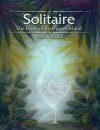![Solitaire: The Dodo of Rodrigues Island Solitaire: The Dodo of Rodrigues Island]()
Click to have a closer look
About this book
Contents
Related titles
About this book
About 43 million years ago, a flock of pigeons from a distant island in the northern Indian Ocean parted company and flew off in different directions. Eventually some of these birds ended up on Mauritius and became known as Dodos, while others flew to the tiny island of Rodrigues and became Solitaires. Although the birds shared a common ancestor and had a similar history and fate, the remoteness of Rodrigues sheltered the solitaire from the rest of the world, so that, unlike the Dodo, it is largely unknown even today.
A few eyewitness accounts of this elegant bird were recorded and have survived over time, providing us with detailed information about its appearance and behaviour. This book examines these accounts, alongside various other journals, artists' impressions, rare drawings and scientific research, to paint a comprehensive portrait of the Solitaire.
The story of the Solitaire begins against the backdrop of an idyllic, densely forested and uninhabited island. Many thousands of years later, man's arrival on the island and its ensuing negative impact contributed, within just 100 years, to the Solitaire's extinction.
This unique and beautifully illustrated book allows the reader to go back in time to see hoe the Solitaire lived and died, to trace what happened following its extinction, and to discover how the resulting scientific evidence has enabled a greater understanding of this fascinating bird.
Contents
Prologue#########
1. The island of Rodrigues ####
2. The ancient forest
3. The first eyewitnesses
4. Who were the Solitaire's parents?
5. The elegant bird
6. Some peculiarities
7. Digging for bones
8. Post-mortem
9. Kindred animals
10. The illusive Dodos
11. The Solitaire today
Epilogue
Appendices
A Scientific names of animals, birds and plants
B Names given to Rodrigues throughout history
C The name `Solitaire'
D The main physical and skeletal differences between the Solitaire and the Dodo
E Museums with Solitaire material
F Extinct animals and birds from Rodrigues
G Animals and birds found in Rodrigues today
H Endemic coastal trees of Rodrigues
Bibliography
Index
About the author
Alan Grihault was brought up in Devon, England and attended Queen Elizabeth's School, Crediton. He trained as a teacher at Kesteven Teacher Training College and, after graduating in 1960, went on to teach at several schools in Derbyshire, before taking up his first overseas contract in Kenya.
He became a head teacher in the UK, and then had further postings abroad for organisations such as the British Council, the Overseas Development Administration and the Department for International Development. Altogether he has worked in nine different countries as a teacher trainer, education adviser, examiner and curriculum developer.
As part of his further studies in education, Alan looked at traditional and practical ways of learning basic skills by African children, before the advent of schools. He has established his own teaching methods through a hands-on approach, which relies on the power of curiosity as the stimulus for educational growth. He utilises this philosophy in his writing, by taking what could be rather a dull subject and transforming it into something fascinating and alive. This is demonstrated in his comprehensive and fully illustrated book on the Dodo, entitled DODO - the bird behind the legend.
Alan is now retired in Mauritius and enjoys presenting programmes on children's television.
Customer Reviews


























